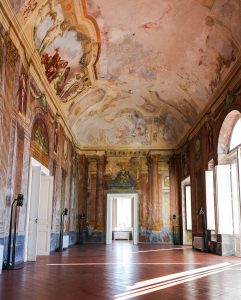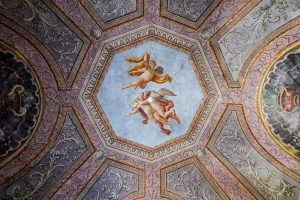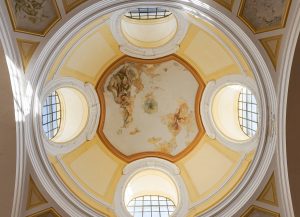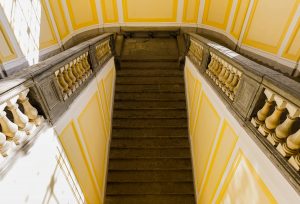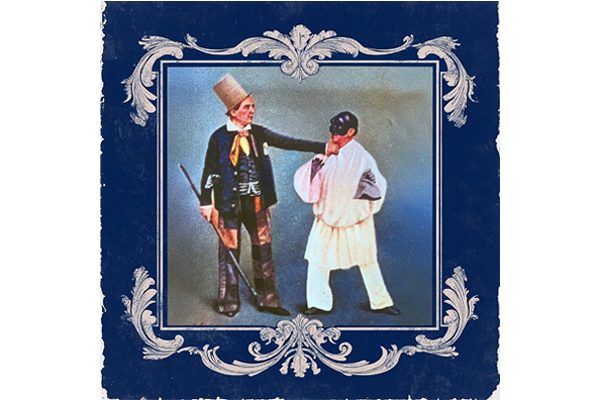point
09
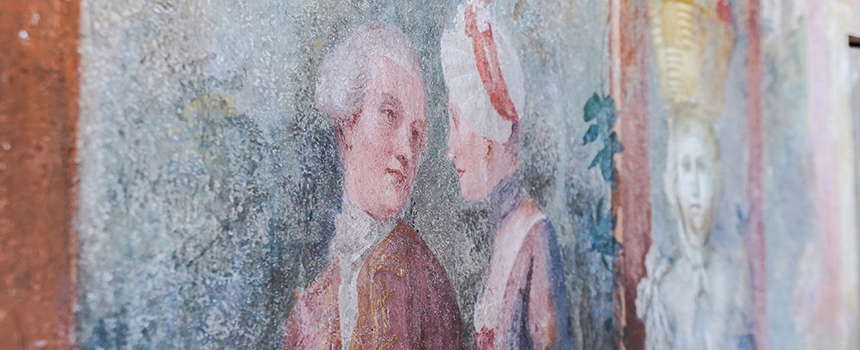
The Incannucciata: technique and ornamental purpose
We are in the most remarkable room of Villa Campolieto, namely “the Incannucciata”. This room was intended as a “family” dining room. Let’s focus on the technique used: in order to support the plaster layer, river reeds were used – hence the name Incannucciata -, which allowed the plaster to be modeled into the desired shape, in this case half-domes in the corners and a large domed vault for the ceiling, which is now partially collapsed. The room was completed in July 1772 by Pietro Antonio Checchi and Carmine Savatore, whom we wish to acknowledge for their excellence in the technique chosen by Vanvitelli to blend architecture and decoration. Today, the barrel vault is exposed as a result of a collapse, which has also allowed the recognition of the materials used. Artist Fedele Fischetti was able to begin working on the fresco on the plaster at the end of summer of that same year. The scene represents life in the villa inside the garden; a large circular gazebo decorated with vines, statues and cherubs stands in the midst of the surrounding countryside, between pine trees and the sea, with some figures in the foreground enjoying the sunset. Some play cards, some have a chat, arrangements are made for dinner, cool drinks are served, a small orchestra is playing.
On the right and left side, at each end of the two tables, we can imagine the hosts placed in the scene, while in the corner on the side of the door that opens onto the vestibule, the architect, Luigi Vanvitelli, celebrated himself by letting himself be portrayed in the act of observing in amazement the images reproduced in the room, with the coffee house fountain in the garden behind him, the remains of which can be seen from the balcony.
Gaetano Magrì worked alongside Fedele Fiaschetti on the decoration of the room; he was specifically chosen for his skills in creating perspectives and views with the fresco technique.
The villa in movies
In 1981, an important scene from the film “La pelle” by Liliana Cavani, based on the novel by Curzio Malaparte and with Claudia Cardinale and Marcello Mastroianni among the most notorious members of the cast, was shot in this room. Specifically, this was the room in which General Clark’s dinner scene took place. The ballroom can also be seen in the film.
You are here
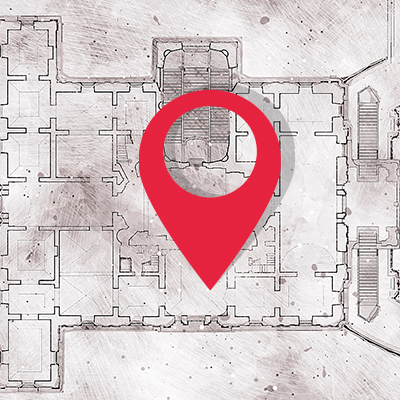
More about
-
In this room and in the Ballroom, in 1981 an important section of the film "La pelle" was filmed, a film by Liliana Cavani based on the novel by Curzio Malaparte, in which Claudia Cardinale and Marcello Mastroianni stand out among the actors and presented in competition at the 34th Cannes Film Festival of the same year.

